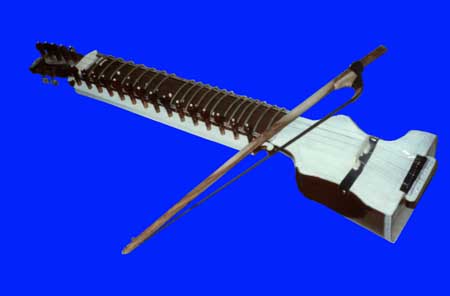Section 1: Introduction

| STRINGING AND TUNING THE DILRUBA AND ESRAJ Section 1 – Introduction Section 2 – Basic Concepts of Tuning Section 3 – Overview of Strings Section 4 – Dilruba/Esraj Strings Section 5 – Tools Section 6 – Stringing the Base Section 7 – Stringing the Tuning Pegs Section 8 – Tightening the Strings |
There are a myriad of ways that we can string and tune the dilruba or the esraj. In this series of web pages, we will deal with the myriad of issues.
It would be nice if I could just pontificate by saying “use this gauge here, and that gauge there….”. Unfortunately, things are not so simple. There is no standard length for these instruments; there is no standard tuning; there is not even a standard as to how many strings they may have. Therefore, it is very difficult for me to tell you what strings to use and what to tune your instrument to.
Do you STILL want me to simply tell you what to do? Ok I will. Go to: “Stringing and Tuning the Dilruba and Esraj: Quickguide“. But if you really want to invest some time, I have prepared an extensive discussion of the topic.
I would like to make a note of one thing. The dilruba and esraj are so similar, that it is pointless to try and divide them up. In almost every case, whatever we say for one instrument, will hold true for the other instrument. Many of the pictures and references will be made to dilruba because it is more common than the esraj. But whenever something really pertains specifically to the dilruba or specifically to the esraj, I will make it very clear.
| STRINGING AND TUNING THE DILRUBA AND ESRAJ Section 1 – Introduction Section 2 – Basic Concepts of Tuning Section 3 – Overview of Strings Section 4 – Dilruba/Esraj Strings Section 5 – Tools Section 6 – Stringing the Base Section 7 – Stringing the Tuning Pegs Section 8 – Tightening the Strings |